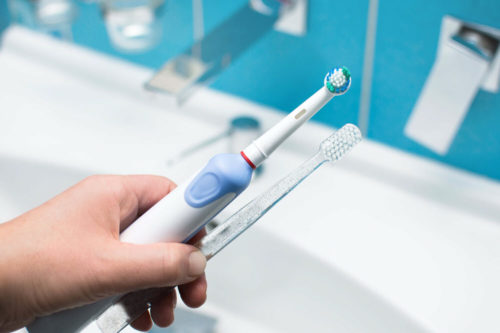The electric versus manual toothbrush debate has waged on for years with no clear winner. That’s because there’s no clear cut answer, as both have their own pros and cons. Ultimately, the best choice will depend on your individual circumstances and requirements. This blog post from our dentist in Bundoora contains more information about the differences between manual and electric toothbrushes so that you can make an informed choice.
Manual Toothbrushes

Manual toothbrushes are often used in favour of electric toothbrushes largely because they’re cheaper and more accessible. This means they’re easier to replace when the bristles wear out, not to mention they come in a much wider variety of options. You can choose from small, medium and large toothbrush heads with different bristle configurations to suit your needs.
One of the other big advantages of a manual toothbrush is that it gives you more control over the brushing process, including how much pressure is exerted. This is helpful for people with more sensitive teeth and gums. In addition, manual toothbrushes are easier to pack when travelling.
Electric Toothbrushes
Electric toothbrushes are less accessible than manual toothbrushes, but more than make up for this in functionality. They do a lot of the work for you, making them a good choice for people who don’t have a good brushing technique or who have limited dexterity. In addition, the movement and power of the rotating brush can be more effective at loosening plaque. Many electric toothbrushes also come with in-built timers to ensure you brush all four quadrants equally for at least the recommended two minutes.
Learn More Today
At Bundoora Family Dental Clinic, our dentist in Bundoora can answer any questions you might have about manual and electric toothbrushes, and advise you on which one is best for your needs. Get in touch with us today by giving us a call or submitting an enquiry online for a prompt response.





